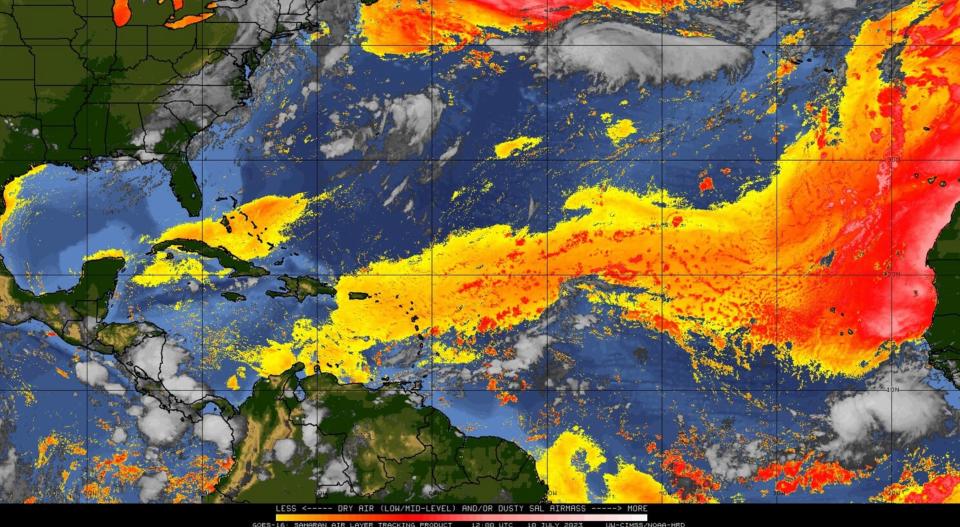Saharan dust could make it to South Florida this week but experts say not to worry
Saharan dust could reach South Florida this week, but experts say most won’t even notice it.
Meteorologists who have been using satellite imagery to track Saharan dust as it has made its way across the Atlantic Ocean believe it could reach South Florida sometime this week, but note that its impact likely won’t be felt by most Floridians.
Satellite images from the National Weather Service showed patches of dust over Puerto Rico on Sunday, but NWS meteorologists told the New York Times that it could take a day or two before it reached South Florida — if it makes it there at all.

Here’s what Floridians should know about Saharan dust.
What is Saharan dust?
Saharan Dust is essentially what its name implies — dust (made up of particulate matter) that originates in the Sahara Desert in Northern Africa. Those particles can be blown for thousands of miles, according to the Centers for Disease Control and Prevention (CDC), and it’s not uncommon for them to make their way to the U.S.
How far does Saharan dust travel?
Saharan dust can travel thousands of miles across the world. It typically impacts parts of Europe, South America, Central America, the Caribbean and the U.S.
In the U.S., Saharan dust usually peaks from late June through mid-August, impacting Puerto Rico, the U.S. Virgin Islands and southern states like Florida and Texas.

How does Saharan dust travel so far?
Saharan dust is usually kicked up by thunderstorms and cyclones, which produce the high-speed winds required to lift the dirt and transport it great distances, according to the CDC.
What health risks does Saharan dust pose?
Saharan dust can be harmful in the same ways as most particulate matter — triggering asthma attacks and aggravating other respiratory conditions. It also decreases air quality.
Children and babies, older adults, people with underlying lung conditions and people with chronic cardiopulmonary diseases are more at risk than others and should take extra precautions if the dust does make its way to Florida, according to the CDC.
Those with asthma should pay attention to pollution levels and strictly follow their asthma action plans.
Saharan dust can still impact those without underlying health conditions. Larger particles can irritate the skin and eyes while smaller particles can be inhaled, causing respiratory disorders and cardiovascular events.
Florida tropics outlook: National Hurricane Center tracking disturbance. Saharan dust helping keep tropics quiet
How to protect yourself from Saharan dust
The first way to protect yourself from Saharan dust is to learn about the U.S. Air Quality Index and monitor it so that you know when air pollution can reach harmful levels.
When air pollution reaches those levels, it’s best to spend more time indoors and choose outdoor activities that aren’t physically taxing.
How does Saharan dust impact weather?
Sahara dust can make it hard for water vapor to form in the atmosphere, so it typically leads to less rainfall and hotter days in affected areas.
This article originally appeared on Pensacola News Journal: Saharan dust could reach Florida this week, but experts aren’t worried

